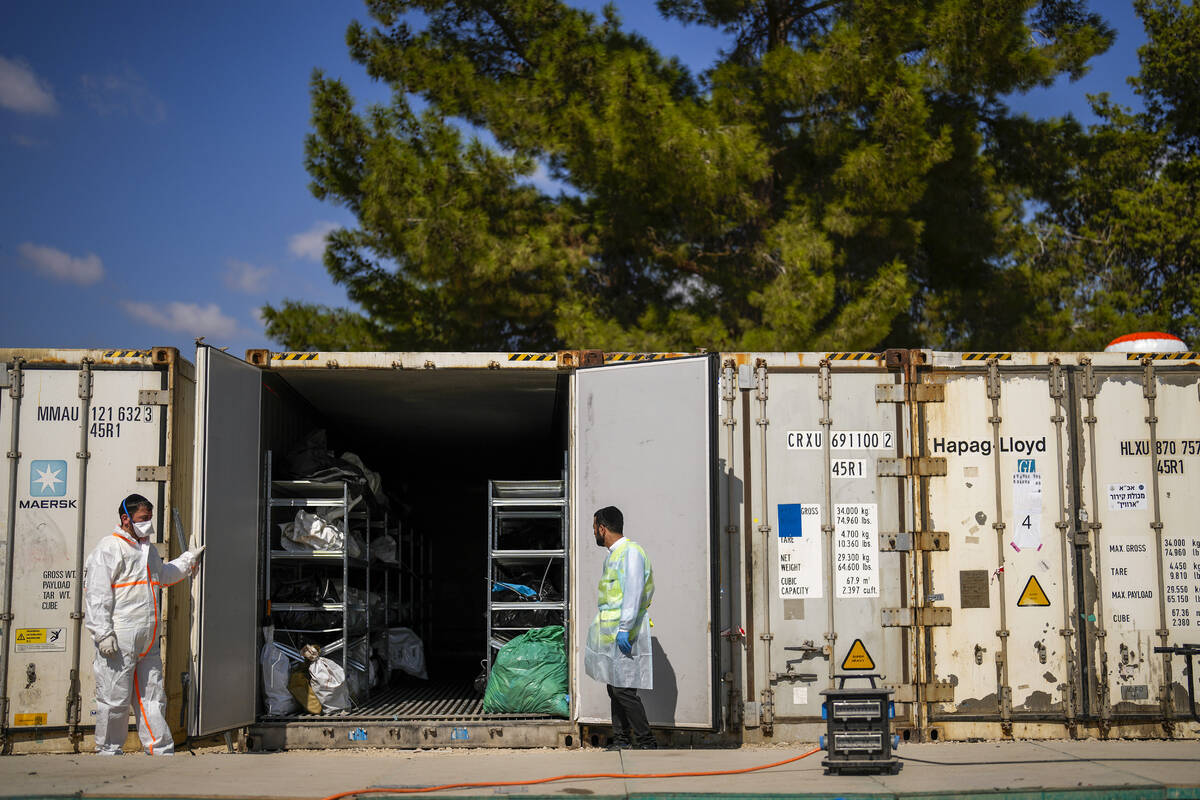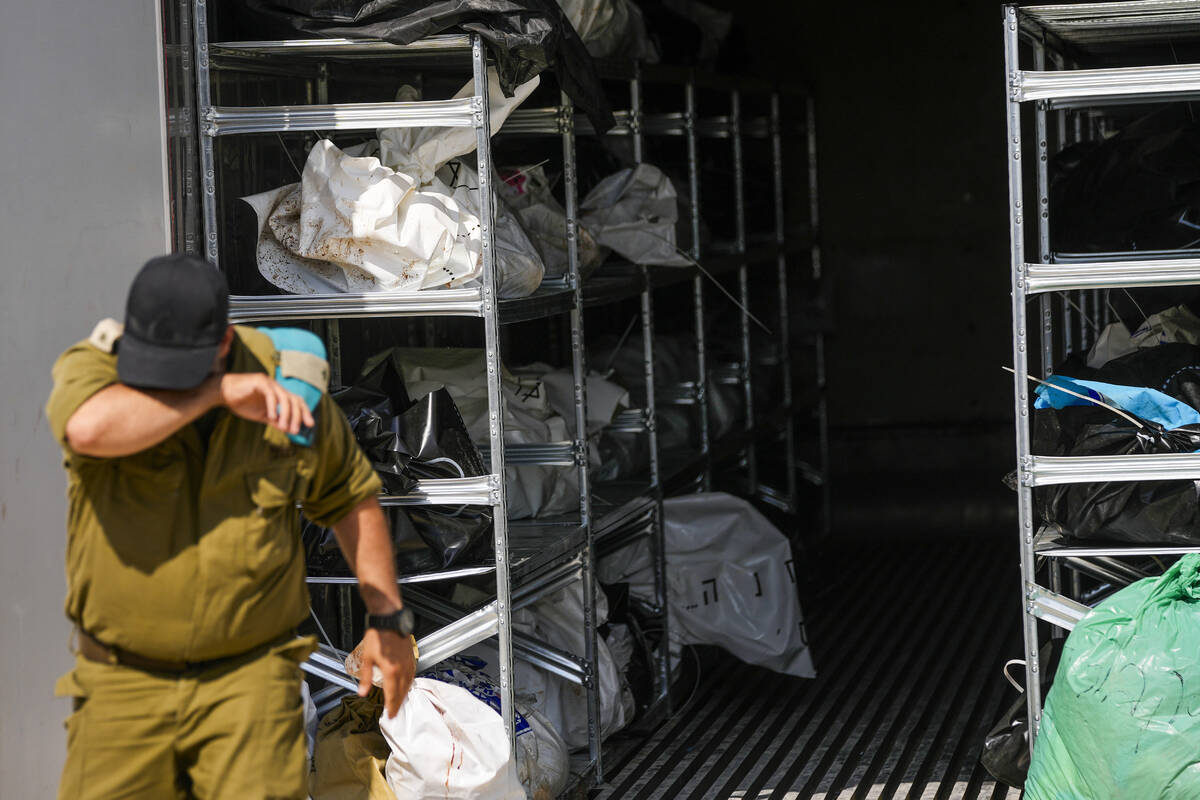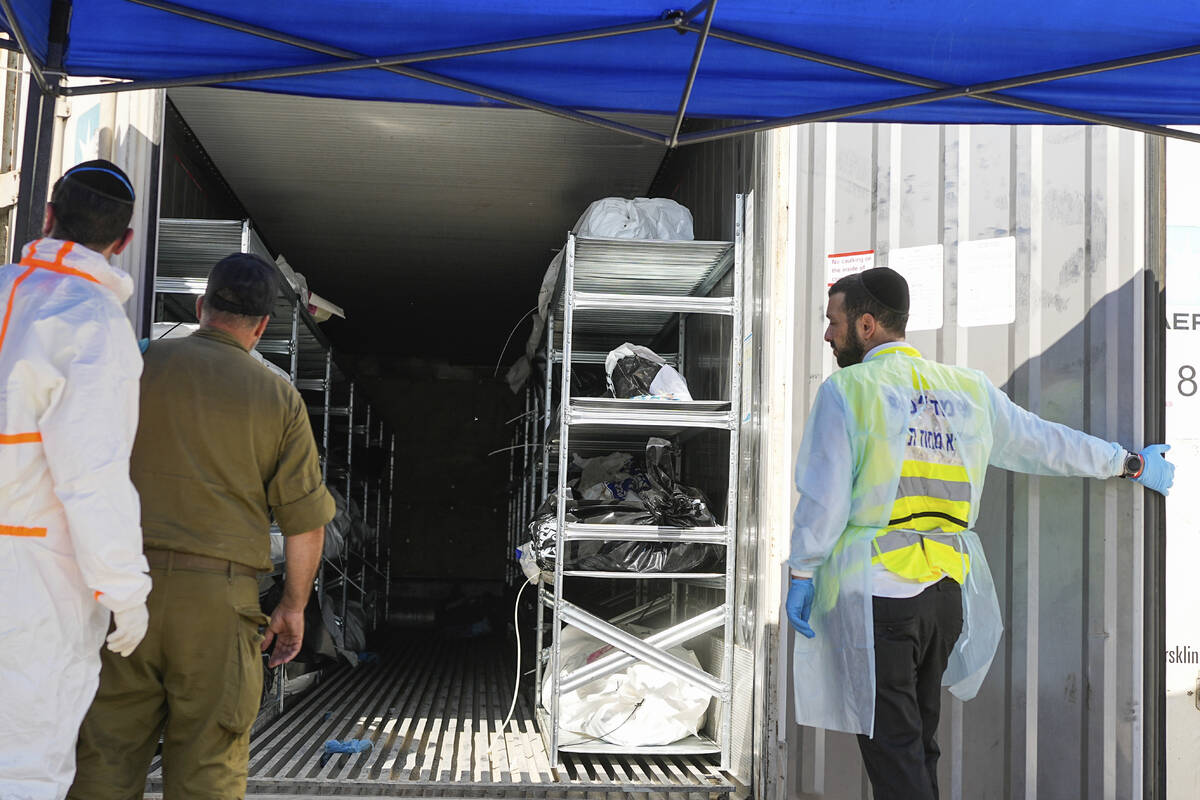Israeli rabbis work around the clock to identify dead from Hamas attack
SITRIYA, Israel — Rarely do rabbis spend the Sabbath counting bodies. But on Saturday, a week after Hamas terrorists blew easily past Israel’s fortified security fence and gunned down hundreds of Israelis — at music festivals, in their homes, in cars while trying to flee — Israel’s military rabbinate made an exception.
At Shura military base in central Israel, bodies have been coming in faster than the rabbis can identify them. Hundreds of soldiers, women, and children in body bags line shelves of refrigerated trucks, awaiting examination. Identification teams gather on plastic stools opposite the trucks to take smoke breaks between shifts. They wear heavy gas masks — the smell of death is overwhelming.
“Generally, Jewish law says that you cannot break the Sabbath for a dead person,” said Rabbi Israel Weiss, who is helping lead the operation. “The exception is when a family is in doubt, and the death is so crippling that it may risk the family’s lives. Then, you must work on the Sabbath to identify the body and bring answers to the family.”
Now, the best the country can offer the families of some 1,300 people killed by Hamas terrorists is final confirmation that their loved ones are dead.
The process was continuing Sunday and could take months, workers said. Some bodies are so disfigured that they cannot be identified. Each must undergo DNA testing, a task made more difficult by the fact that the military does not have a DNA database for civilians. Only half the civilians have been identified thus far, rabbis said.
Seeking the final word on their loved ones, families across Israel have flocked to hospitals to give DNA samples in the hope that they can be matched to the bodies at one of several bases around the country receiving the dead.
The family of Maayan Mualem wants answers. The last they heard, Maayan had been shot in the back by Hamas fighters who burst into the open field of the music festival she attended, gunning down partygoers in an open field. Her family spent a whole day searching Soroka Medical Center in southern Israel to find her body, only to come up short.
“For 12 hours until midnight, we went department by department, bed by bed, and she wasn’t there,” said Raz Mualem, Maayan’s brother.
Last week, the family filed into a police station outside of Tel Aviv to give DNA samples. They hope to receive word from the rabbinate that it is a match.
“The state of Israel will put in any effort that is possible, money, resources, so that every fallen soldier and citizen will be recognized,” said Weiss. “Until we reach the point that no mother is left crying over the grave of her son or daughter, having any sort of doubt that it might not be them.”
Rabbis have not worked on the Sabbath since 2005, said Weiss, when the rabbinate disinterred graves from a cemetery in an Israeli settlement in Gaza that residents evacuated as part of Israel’s unilateral withdrawal at the time. Hamas won Palestinian elections in 2006, and the following year, it seized control of Gaza from the Palestinian Authority.
Nearly two decades later, the terrorist group is still in power in Gaza, and the rabbinate was again at work on the Sabbath.
Teams of reservists, some as young as 23, work around the clock identifying bodies. Prior to the attack, some worked as dentists, some were students, some worked at tech companies. Now, they spend their days in white hazmat suits.
“The reservists go home at night and try to unsee what they have seen here,” said Capt. Maayan, a 40-year-old dentist from Tel Aviv who works on a team identifying the bodies of women. Maayan, whose last name could not be published under military regulations, said that on one of her shifts she unzipped a body bag to find one of her former patients staring up at her.
“No one should have to see what we see here, and what we will never stop seeing,” she said, starting to cry.
The process of identifying soldiers has gone more quickly, identification teams said. Soldiers give DNA samples at the start of their service, making them easier to identify. According to the military, 90 percent of dead soldiers — 265 bodies — have been identified. But the bodies keep coming in.
“There are still so many bodies piled. It’s endless,” said Senior Staff Sgt. Avigail, who is 48 and from Tel Aviv and once worked at the telephone company. Her team operates in shifts, four women at a time. At the end of the day, Avigail said, her team consults with psychologists and social workers to try to grapple with the horrors of the day.
Her voice quivering, she described how staff had decided not to perform the ritual cleansing of dead bodies under Jewish law.
“We don’t perform the ritual on the people who were murdered,” she said. “Anyone who died in this manner is already considered pure.”
Some of the bodies have been brought to Mount Herzl, Israel’s national cemetery in Jerusalem. On Saturday night, the site was shrouded in a mist so thick it blurred streetlights. Still, the freshly dug graves were visible, illuminated by harsh floodlights to help the military guard nearby keep close watch.
In the morning, the digging would begin again. But for now, they sat hunched, hands on their weapons — young soldiers keeping watch over the graves of young soldiers.


























